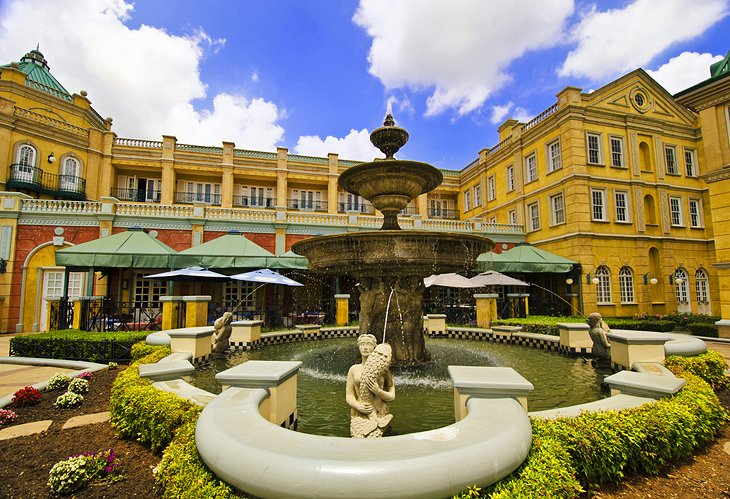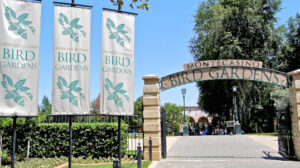The 7-Second Trick For Johannesburg North Attractions
Table of ContentsThe 8-Second Trick For Johannesburg North AttractionsJohannesburg North Attractions - The FactsGetting My Johannesburg North Attractions To WorkHow Johannesburg North Attractions can Save You Time, Stress, and Money.Rumored Buzz on Johannesburg North AttractionsThe Of Johannesburg North AttractionsJohannesburg North Attractions Things To Know Before You Buy
You need to keep security in mind and travelers should remain sharp at all times when in strange environments. Talk with the citizens when you are in town to learn about the area you are remaining in. Johannesburg North attractions. When on the road (this does not relate to mall and other protected environments) finest general guidance is to try your ideal to look like a neighborhood and to stay clear of presenting any kind of riches
Johannesburg North Attractions Fundamentals Explained
Professor Revil Mason O. J. (Thomson, 1946) discovered the Witwatersrand's pre-colonial history. His archaeological work blew up the 'em pty land' myth, according to which the region was empty of human habitation before the arrival of European inhabitants. In his magazines Prehistory of the Transvaal: A Document of Human Task (1962) and Beginnings of Black Individuals of Johannesburg and the Southern Western Central Transvaal AD 3501880 (1986 ), Teacher Mason showed the level of social and financial development in the location prior to Europeans set foot below.

The Basic Principles Of Johannesburg North Attractions
In 1878, David Wardrop discovered gold in quartz veins at Zwartkop, north of Krugersdorp. In 1881, Stephanus Minnaar came across gold on the farm Kromdraai, near the Cradle of Mankind.
In March 1886, an outcropping (soon to be called the Key Reef) was located, quite fortuitously, on Gerhardus Oosthuizen's farm Langlaagte. Some claim that the Lancastrian coal miner George Pedestrian discovered this reef. An additional itinerant English miner, George Harrison (that had previously operated in Australian mines) acquired a prospecting licence in regard of Langlaagte in Might 1886.
He decided to go on in a mission for greener pastures, and disposed of his Langlaagte insurance claim for the handsome amount of 10. Alas: under lay the richest goldfield ever before found. The discovery of this rich auriferous coral reef prompted a gold rush that signified the end of bucolic tranquillity in the southern Transvaal.
It would certainly, within six years, come to be the largest town in southern Africa. Within a decade, it would make the Z. A. R. till after that an anarchical and bankrupt little state the wealthiest country in Africa. By the turn of the century, the Z. A. R. was to surpass Russia, Australia and the United States of America to come to be the globe's leading gold producer, creating greater than a quarter of the world's gold.
Not known Facts About Johannesburg North Attractions
It was called Ferreira's Camp, named after Colonel Ignatius Ferreira. He was a Boer adventurer upon whom the British authorities had presented the condition of Friend of the A Lot Of Identified Order of St Michael and St George (qualifying him to the post-nominal letters C. M. G.) in gratitude for his role in the war that had actually deposed the Pedi king Sekhukhune in 1879.
Soon the camp was including outdoors tents and wagons as newcomers showed up daily from much and wide. By September 1886, some 400 people lived in Ferreira's Camp, which soon flaunted upreared iron and hardwood structures. 2 various other camps were developed: Meyer's Camp on the farm Doornfontein, and Paarl Camp. The latter was nicknamed Afrikander Camp; many individuals from the Cape Colony worked out there.

Some Of Johannesburg North Attractions
This name got money by word of mouth, such that the State Assistant attested the name to the Mining Commissioner on 9 October 1886. Stands in the village were auctioned on 8 December 1886. While some stands were cost 10, others were knocked down for as low as sixpence.
2 years later on, these erven were to alter hands for as high as 750 each. The tented camps dwindled as a dorp of corrugated iron buildings established and broadened north of the mines situated along the Key Reef Road. Areas such as Jeppe's Town (where working-class immigrants erected their houses) and Doornfontein (where the wealthy brand-new 'Randlords' began to construct their extravagant residences) were soon contributed to the ever-expanding map of the community.
Not known Facts About Johannesburg North Attractions
Besides the street names, there were no indications of Johannesburg being situated in a Dutch-speaking country. Several years later on, C. W. Kearns O. J. (among the very first boys enrolled at St John's University in 1898) would certainly recall: 'An unusual reality concerning Johannesburg was that, although it remained in the [Boer Republic], nearly everyone talked English and also the Federal government slaves dealt with one in English, unless they were first resolved in the Taal (or Low Dutch)'.
Because of this, Britain had an interest in ensuring ideal conditions for gold manufacturing on the Witwatersrand, and that the gold was exported to London as opposed to Berlin an imperative made even more clamant by the Z. A. R - Johannesburg North attractions.'s boosting toenadering with Germany. Mine owners got on a clash with Head of state Kruger, whose policy of monopolistic giving ins (usually given to his cronies) protected against mining business from acquiring supplies of materials (particularly dynamite) and work visit by themselves, less expensive terms
The Best Guide To Johannesburg North Attractions
In 1890, the Volksraad had limited the franchise to white men who had resided in the Z. A. R. for fourteen years or longer, thus disqualifying a lot of the immigrants (who happened to be the major contributors to the fiscus). However, agitation for the vote was a mere pretext for promoting a different program; a lot of uitlanders regarded themselves as momentary site visitors and had no objective of staying in the Z.